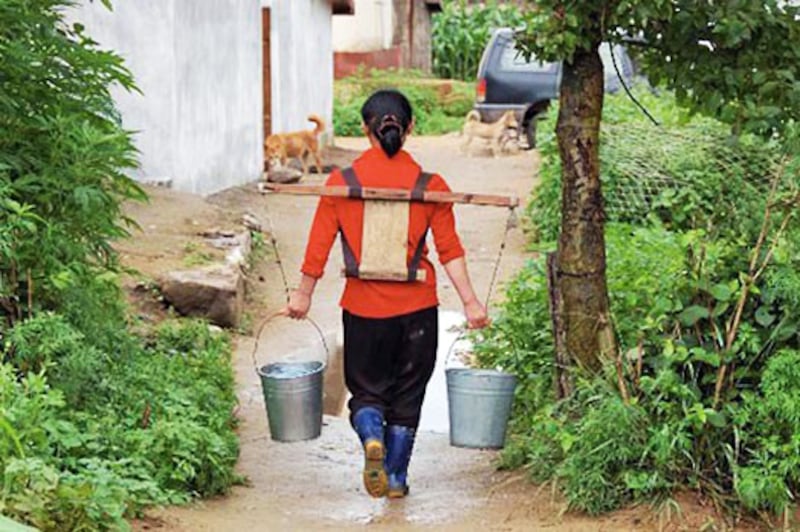Read a version of this story in Korean
North Korean female teachers are spending their winter break hauling water by hand -- two buckets at a time -- up apartment stairwells to make ends meet, residents in the country told Radio Free Asia.
Teaching is a respected profession in North Korea, so residents were surprised to see these women carrying buckets of water even on Lunar New Year’s day.
But the teachers are in need of the extra cash. They are in the same boat as everyone else -- ever since the North Korean economy collapsed in the 1990s, salaries from government-assigned jobs became essentially worthless and nowhere near enough to live on.
Since then, people have needed to find other ways to make a living besides their jobs.
Don’t North Korean apartments have plumbing?
Most apartment buildings in North Korea were built with plumbing, but for various reasons -- shot water pumps, broken pipes or inconsistent water service -- there’s no water coming out of the tap in some buildings.
Many apartment-dwellers have installed massive 200-liter (53-gallon) water tanks in their homes. But these need to be filled once every couple days.
Refilling the tank could take all day, and a lot of hard work, and residents who can afford to pay someone else to do it would rather use that time away from home, doing something else.
That’s where the teachers step in.
But why teachers?
Since the apartment owners are often not home when the water is delivered, they need to entrust the house key to someone, and teachers are respected and trusted.
“People believe that teachers would not mess with their household items,” a resident of the northeastern province of North Hamgyong told RFA Korean on condition of anonymity for safety reasons.
How much can they earn?
It depends on what floor the customer lives on. The higher up, the higher the rate.
“They fetch water from the pump installed in the basement of the apartment filling 10-liter water buckets,” a resident of South Pyongan province told RFA. “Each bucket costs 300 North Korean won (1.5 US cents). The price doubles to 600 won (3 cents) from the 4th floor and above.”
This is just one of several reasons why wealthier people tend to live in the lower floors, a reversal of the trend in place when the buildings were built.

When electricity and water were reliable, it was the upper floors that were more desirable because they have better views and fewer pests. But now that elevators don’t always work and people have to haul their own water up the stairs, it’s just more convenient to be on the lower floors.
“To fill the water tank installed in each apartment kitchen, you have to go up and down the stairs 10 times holding a water bucket in each hand, the South Pyongan resident said. ”If you fill the water tank of two houses on the third floor or lower, you will earn about 12,000 won (60 cents).”
That’s enough to buy about 1.5 kilograms of rice according to the latest market prices published by the Japan-based AsiaPress media outlet that focuses on news from North Korea.
It’s a reasonably stable job, the North Hamgyong resident said.
“In the apartment where I live, three female elementary and middle school teachers earn money for food by hauling water,” she said. “Each fetch water for three houses every two days.”
But the fact that these are teachers is not lost on the residents, she said.
“They pity the teachers of this country, who are supposed to be seen as professionals in the revolution, but are resigned to fetching water so they can get money” to survive, she said.
Translated by Claire S. Lee. Edited by Eugene Whong.
